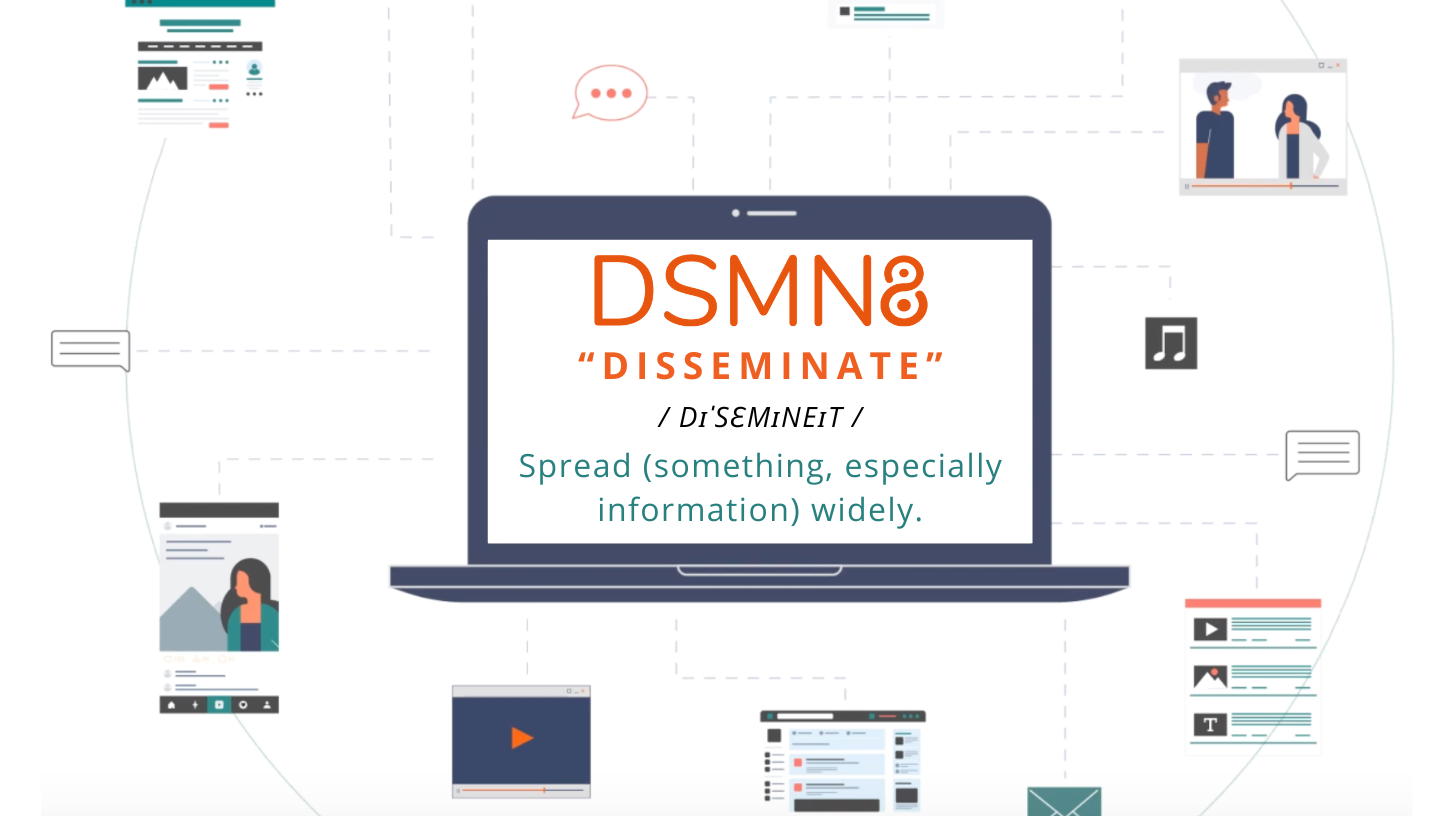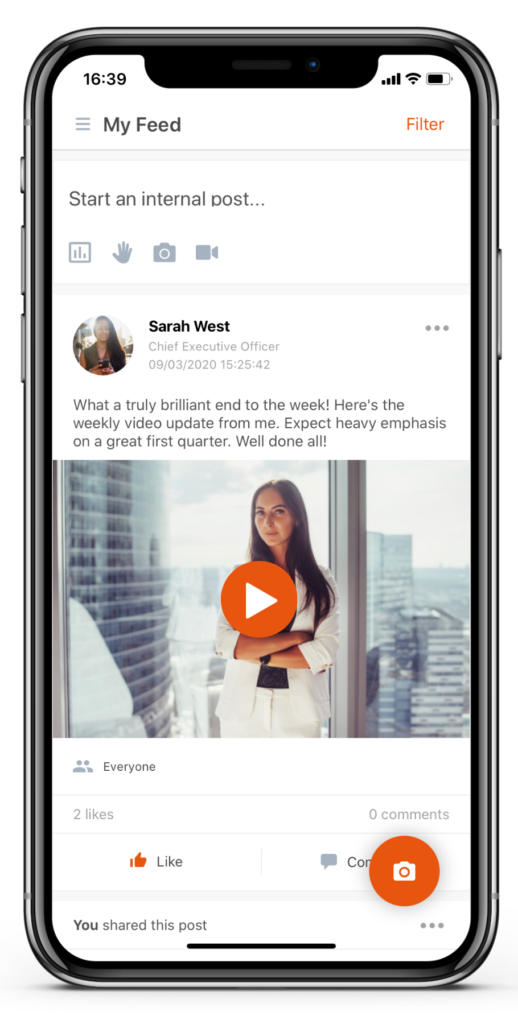
Remote working is something of an employer branding buzzphrase right now. The chance to work remotely seems to be all the rage among millennials and young job seekers, with older generations realizing the benefits too.
However, as a company, you have to consider not only the benefits of remote working, but how you will manage either a partially-remote or fully-remote workforce.
After all, with remote working, there is no “one size fits all solution.” The success of remote working can vary company to company, depending primarily on company culture and industry.
The topic of remote work has surged of late, due mainly to the public concern around COVID-19, with some of the largest organizations taking measures around remote work to cease the spread.
Twitter recently posted a statement in the form of a blog post that urged staff to work from home, with the policy being mandatory for those in some of the more highly affected areas. However, it wasn’t so much the public health emergency that spurred them to adopt remote working, as the post also read:
“While this is a big change for us, we have already been moving towards a more distributed workforce that’s increasingly remote. We’re a global service, and we’re committed to enabling anyone, anywhere to work at Twitter.”
Jack Dorsey, CEO of Twitter, has supported remote working for some time, even saying in November that he intended to work in Africa for at least half of the year in 2020. Some of the world’s largest organizations are taking action, and last week’s dip in the US stock market was a wake-up call to how adept we are at powering through in the face of adversity.
What are the Benefits of Remote Working?
So, would remote work be right for your organization, and more importantly, how will you organize and manage the process? Let’s start by identifying a few of the benefits.
Jump to:
- Reduced Overhead Costs for Businesses
- Employees Make Huge Savings
- Increased Hiring Opportunities
- Better Work-Life Balance for Employees
- Reduced Commute Time
- Increased Employee Engagement

Offering remote working can significantly lower a company’s overhead costs, and employee can save huge amounts.
Reduced Overhead Costs for Businesses
It’s a common misconception that it’s only employees who reap the financial benefits of remote work, as companies are also able to save vast amounts on overhead costs. Many partially-remote workforces boycott the cost of a large office/building by investing in co-working spaces for their employees.
A co-working space will typically offer all the office essentials for a fraction of the cost, including meeting rooms, assigned desks, and call booths. Of course, a fully remote workforce would eradicate the need for an office space altogether, allowing an organization to put more money into growing the business.
A 2019 study found that 61% of employees who were currently working remotely would expect a pay rise if this benefit was taken away from them.
Employees Make Huge Savings
One of the more apparent benefits of remote work for employees is that they will be saving a considerable amount daily. A study from CareerBuilder found that the average employee spends over $3,300 a year just getting to and from work.
Couple this with the coffee shop pit stop en route to the office, lunchtime outings, and drinks after work, and the average employee will be saving a considerable amount.

Top candidates are more likely to consider a company that promotes a healthy work-life balance.
Increased Hiring Opportunities
The option to work remotely can increase an organization’s desirability in the eyes of many top candidates and significantly opens up its talent pool. By offering remote working, the correct candidate no longer needs to be in the right location, as it means many will not be required to relocate for a role, which can be a decision-hindering factor.
It also helps with retention rates, as a study found 55% of remote workers would be likely to look for another job if they were no longer allowed to work remotely.
Better Work-Life Balance for Employees
Another employer branding benefit that stems from remote working is the flexibility it affords most employees. Employee retention and engagement rise when a company promotes a healthy work-life balance. Without a fixed schedule or location, employees can manage their work around other commitments, usually involving childcare. They also do not have to worry about average moving costs that can go up to beyond $1000, which would be the case if they had to move closer to the main office
Employees clearly enjoy this flexibility, as the same study found that full-time remote workers say they’re happy in their job 22% more than people who never work remotely.
Remote working doesn’t mean an entirely remote workforce. Still, by offering the opportunity where necessary, you are allowing your employees the freedom to commit to other responsibilities without disrupting their work life.
A study by Unison found the number of sick days taken by employees fell from 12% to just 2% when their employers implemented a flexible working policy. Forbes, Ernst & Young, and others, have recognized workplace flexibility as a useful tool in helping narrow the gender pay gap.

The average employee spends a total of 9 days travelling to and from work per year.
Reduced Commute Time for Employees
In addition to cutting your employees’ commuting costs to zero, offering remote working will also reduce their commute time to mere seconds (one room to the next!).
The average commute time in the USA is around 54 minutes long (round journey), and this increases by almost double for those working in business districts of major cities. All considered, this means working from home could save your employees an average of 9 days of travel time per year.
Increased Employee Engagement
Reduced commute times can be great news for employers, as an AAT study found nearly a quarter of participants were putting in an average of 6.7 hours of extra work per week when their employers rejected a traditional office arrangement. These findings suggest that employees are more inclined to put in time working when they’re less constricted by routine.
The Essential Tools You'll Need for Remote Working
So, we know the main benefits, are there any disadvantages? Sure, it’s not always better, and fully-remote working can prove difficult for some, with the main obstacle being employee isolation and the adverse effects on mental health that can result.
However, with the right tools at your disposal, you’ll not only be able to manage your workforce from anywhere in the world, but you’ll be able to combat the common disadvantage of employee isolation too! Here’s everything you’ll need.
Jump to:

Slack CEO, Sterwart Butterfield, and company at the New York Stock Exchange in 2019 (image source)
Slack
What is it?
Slack is a cloud-based proprietary instant messaging platform that intends to serve as an email alternative, creating more concise conversations.
Why do you need it?
If you’re thinking about offering your employees the chance to work remotely, you’ll need an effective workplace communications platform that allows you to reach out to employees and colleagues without the formality of email, or trying to reach them by phone.
Slack allows you to send instant messages to anybody in your organization using the platform and offers both desktop and mobile solutions. The platform provides instant clarity and organization by allowing conversations to happen in dedicated spaces called “channels.” Allowing users to prioritize messages instead of having them pile up one by one in an email inbox.
Slack allows you to send everything from messages to large documents and even code, which you can locate in an instant through an innovative searchable archive.
Alternative: WhatsApp

Zoom Video Communications takes part in a bell ringing ceremony at the NASDAQ MarketSite in New York (© Reuters, image source)
Zoom
What is it?
Zoom is a video communications platform that provides conferencing services via cloud-based computing.
Why do you need it?
Having an easy-to-use instant messaging platform like Slack is great, but from time to time, you’ll need to be having long-form communications that, once upon a time, could only be had face to face. Zoom offers the perfect solution with its simplified video communications tool, allowing you to schedule, start, and join video calls efficiently. Zoom provides mobile applications, too, meaning you’re always reachable, even when you’re on the go.
The platform offers various features and boasts multiple solutions, including Zoom Video Webinars, allowing online events with up to 100 interactive video participants. There’s also a chat function, which enables users to communicate thoughts and ideas without interrupting a call.
Alternatives: Google Hangouts, GoToMeeting
DSMN8

What is it?
DSMN8 is an all-in-one employee advocacy, employee influencer and employee engagement tool.
Why do you need it?
Whether you’re thinking of going partially remote or fully remote, a concern expressed by organizations big and small is that employees lose connection with the company, and become distant due to lack of involvement. It’s for this reason that DSMN8’s internal comms solution is a must-have tool for organizations that incorporate remote working.
The innovative technology enables employees and organizations to communicate like never before, in a way that works for everyone, increasing employee engagement and company knowledge all round.

DSMN8 allows you to broadcast video updates.
DSMN8 enables users to keep up to date with all your current company news and discussions with an array of unique features. These are particularly useful for a remote workforce as it allows your employees to remain connected to the day-to-day goings on within the company, regardless of department or geographical location.
Video updates can be used by senior management to broadcast crucial messages and important updates. Perhaps even to introduce a new recruit to the remote team! Important updates can be disseminated easily across the company without worrying whether emails have been received and opened. You can even credit specific employees or teams by tagging them in posts.
DSMN8’s intuitive desktop, IOS, and Android mobile applications enable easy use by all employees, whatever the level of a user’s technical ability.

© Image from Pinterest
Google Docs
What is it?
Google Docs is a free (paid option available) cloud-based platform within which you can create, edit, and collaborate on documents and spreadsheets.
Why do you need it?
When you’re working remotely, being able to work and collaborate on ideas in real-time is essential. Without the necessary tools, collaboration can be unclear and time-consuming, resulting in back and forth email conversations and edited versions.
Google Docs is the ideal tool for collaborative projects as multiple users can work together in real-time from separate geographical locations, simply by sharing with colleagues via email link. All users can suggest amendments, see who made specific changes to the document, and check when those amendments were made.
Using Google Docs, files can be easily accessed through Google’s homepage on any desktop or mobile device, even offering separate mobile applications to ensure ease of access on the go. Because documents are stored online, it relieves any anxiety companies may have about potential data breaches when you take work out of the office.
Google Docs is just one from a comprehensive package of online tools offered by Google.
Alternative: Microsoft Office
So, that’s the blueprint for running and managing a successful remote workforce. As mentioned, it’s simply not practical for every company, but for those who can, the benefits are plenty, and the tools are there.
Ensure you offer training on the tech, and that employees know how to use it effectively, most of the companies mentioned above will offer this as part of their service.
Remember that offering remote work does not have to be fully remote, merely offering the opportunity to do so when necessary can boost employee morale and job satisfaction.
Ready to get started with employee advocacy?
But not sure if you’re ready for an employee advocacy platform?
Take our short quiz to see if you have the foundations in place!
Prefer to cut to the chase and speak with a member of our team?
Roger that!
Schedule a call with one of the team.
Lewis Gray
Senior Marketing Manager and Employee Advocacy Program Manager at DSMN8. Lewis specialises in content strategy, growing brand visibility and generating inbound leads. His background in Sales lends itself well to demand generation in the B2B niche.


